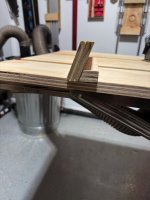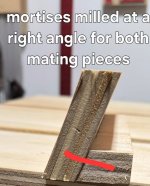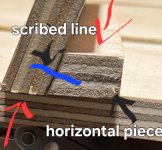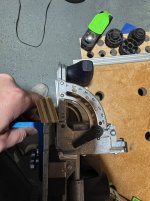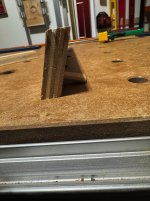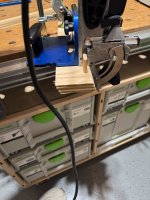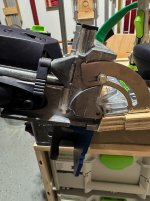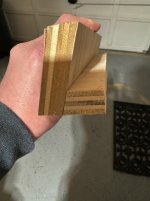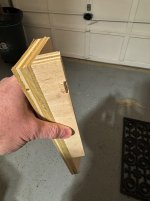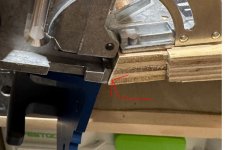NewWoodWorkerVA
Member
- Joined
- Jul 30, 2023
- Messages
- 19
I'm trying to figure out the geometry to join these with a domino (18 degree bevel). I either have to reference the bottom of the pieces (As shown in the photo) or draw a line on the larger left piece and do a "domino in the middle".
I've done picture frames with my domino before (and they turned out perfectly aligned; my stock worked with the reference stops) but this situation is a bit different.
Any pointers are appreciated. Do I just set my domino fence to 18 degrees and place the fence against the bottom edge of the left board? What about the right board? Referencing off the bottom for it with the fence of the domino didn't look like it would give me the correct geometry.
for the right side piece, I thought about doing extra long domino cuts before I put the bevel in it at the table saw, but figured I'd ask here first.
Thanks
I've done picture frames with my domino before (and they turned out perfectly aligned; my stock worked with the reference stops) but this situation is a bit different.
Any pointers are appreciated. Do I just set my domino fence to 18 degrees and place the fence against the bottom edge of the left board? What about the right board? Referencing off the bottom for it with the fence of the domino didn't look like it would give me the correct geometry.
for the right side piece, I thought about doing extra long domino cuts before I put the bevel in it at the table saw, but figured I'd ask here first.
Thanks

